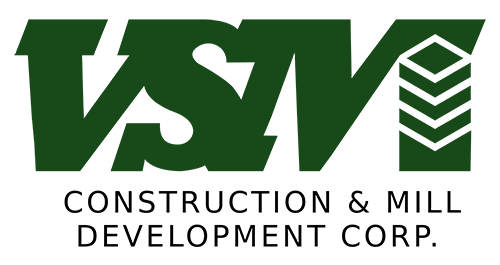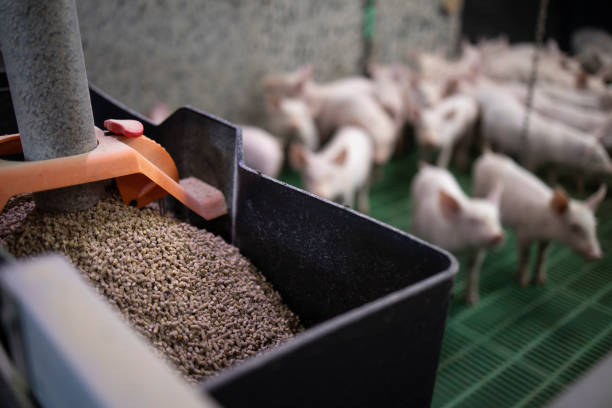Feed manufacturing plays a crucial role in ensuring the health and productivity of livestock. However, this industry is subject to many regulations to maintain safety standards and protect both animal and human health. A vital aspect of this process is the installation of grain silos in the Philippines, which is essential for the safe storage of raw materials.
Grain silos not only protect feed ingredients from contamination and spoilage but also ensure that manufacturers can comply with safety regulations effectively. Properly installed and maintained silos help streamline operations and facilitate better inventory management, ultimately contributing to the overall safety and quality of feed production.
This blog post delves into the intricate landscape of compliance and safety in feed manufacturing, offering insights and strategies for navigating this challenging terrain, including the vital role of grain silos in maintaining industry standards.
The importance of compliance in feed manufacturing
Compliance in feed manufacturing is not just about following rules; it’s about ensuring the safety and quality of animal feed, which directly impacts the food chain and, ultimately, human health. Due to its position at the beginning of the food production chain, the feed industry faces stringent regulations. Any contamination or quality issues in animal feed can have far-reaching consequences, affecting animal health and the safety of food products derived from these animals.
Key regulatory bodies in the Philippines
- Bureau of Animal Industry (BAI): Operating under the Department of Agriculture, BAI is the primary regulatory body overseeing animal feed safety and quality in the Philippines.
- National Meat Inspection Service (NMIS): While primarily focused on meat inspection, NMIS also regulates feed additives and ensures the safety of animal products.
- Food and Drug Administration (FDA) Philippines: The FDA regulates certain aspects of animal feed, particularly those related to veterinary drugs and feed additives.
- Fertilizer and Pesticide Authority (FPA): This agency regulates the use of pesticides and other chemicals that may indirectly affect animal feed through crop production.
Understanding the regulatory landscape in the Philippines
Food Safety Act of 2013 (Republic Act No. 10611)
This act is the cornerstone of food safety regulations in the Philippines. Key aspects include:
- Mandatory registration: All food establishments must register with the BAI.
- Good Manufacturing Practices (GMPs): Food manufacturers must adhere to GMPs as the BAI prescribes.
- Hazard Analysis Critical Control Point (HACCP): Food manufacturers are required to implement HACCP systems.
- Traceability: The act mandates the establishment of traceability systems throughout the food supply chain.
Administrative Order No. 16, Series of 2006
This order provides specific guidelines for the manufacture, importation, labeling, and distribution of meat and meat products:
- Product registration: All meat and meat products must be registered with the BAI.
- Labeling requirements: Detailed guidelines on proper labeling of food products.
- Quality standards: Establishes minimum nutritional and safety standards for various types of foods.
Veterinary Drug Residues Regulations
The Philippines has regulations in place to control veterinary drug residues in animal products:
- Maximum Residue Limits (MRLs): Adherence to MRLs set by the Codex Alimentarius Commission and local regulations.
- Withdrawal periods: Strict observance of withdrawal periods for medicated feeds.
Implementing compliance strategies
1. Developing a robust food safety plan
A comprehensive food safety plan is the cornerstone of compliance. This plan should include:
- Hazard analysis
- Preventive controls
- Monitoring procedures
- Corrective actions
- Verification procedures
2. Employee training and education
Well-trained employees are crucial for maintaining compliance. Regular training sessions should cover:
- Current regulations and their implications
- Proper handling and manufacturing practices
- Record-keeping procedures
- Importance of personal hygiene and facility sanitation
3. Quality control and testing
Implementing rigorous quality control measures is essential:
- Regular testing of raw materials and finished products
- Maintaining detailed records of all tests and results
- Implementing a traceability system for all ingredients and products
4. Supplier verification
Ensuring the safety of incoming ingredients is critical:
- Develop a supplier approval program
- Conduct regular audits of suppliers
- Require certificates of analysis for all incoming materials
Safety considerations in feed manufacturing
1. Contamination prevention
Preventing contamination is a top priority:
- Implement strict sanitation procedures
- Use dedicated equipment for different types of feed
- Establish proper storage practices for ingredients and finished products
2. Dust control
Feed manufacturing often produces dust, which can pose safety hazards:
- Install proper ventilation systems
- Implement regular cleaning schedules
- Provide personal protective equipment for workers
3. Equipment safety
Ensuring the safety of manufacturing equipment is crucial:
- Regular maintenance and inspections
- Proper guarding of moving parts
- Clear operating procedures and safety protocols
Challenges in compliance and safety
1. Keeping up with changing regulations
The regulatory landscape is constantly evolving. Stay informed by:
- Subscribing to industry newsletters
- Attending conferences and seminars
- Joining industry associations
2. Cost of compliance
Implementing and maintaining compliance measures can be costly. Strategies to manage costs include:
- Gradual implementation of new systems
- Investing in technology for efficiency
- Considering outsourcing certain compliance tasks
3. Balancing efficiency and compliance
Maintaining productivity while ensuring compliance can be challenging. Solutions include:
- Integrating compliance measures into existing processes
- Using automation where possible
- Regular review and optimization of procedures
Conclusion
Navigating the complex world of regulations, compliance, and safety in feed manufacturing is an ongoing challenge. However, meeting for the sake of animal health, food safety, and public trust is a crucial challenge. Feed manufacturers can ensure they’re producing safe, high-quality feed while meeting all regulatory requirements by staying informed, implementing robust safety and compliance programs, and continuously adapting to new regulations and technologies.
The key to success in this field lies in viewing compliance not as a burden but as an opportunity to improve processes, enhance product quality, and ultimately contribute to a safer, more sustainable food production system. As the industry continues to evolve, those who embrace these challenges and innovate in their approach to compliance and safety will be best positioned for long-term success in the vital field of feed manufacturing.
Ensure compliance and guarantee safety! Master feed manufacturing regulations today. Protect your business and livestock—act now for a secure, compliant future in animal nutrition.

